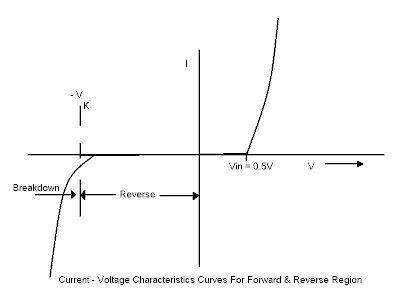The diode rectifier converts the input sinusoidal voltage Vs to a unipolar out Vo. There are two types of rectifier circuits:
- Half-wave Rectifier and
- Full-wave Rectifier.
2. Multimeter
3. Resistor 10KΩ
4. Capacitor 1μF, 47μF
5. Diode Four Pieces
6. Oscilloscope
7. Signal Generator
8. Wire.
Circuit Diagram For Half-wave Rectifier:
The input and output of the rectifier are drawn in Figere-1. Diode conducts only when it is forward biased. For Vs = Vm sinωt, DC voltage and current of a half-wave rectifier are as follows
VDC = Vm/π – (1/2)VDO
IDC = {Vm/π – (1/2)VDO}/R
Where VDO ≈ 0.7 V
PIV (Peak Inverse Voltage): -
PIV is the Peak Reverse Voltage that appears across the diode when it is reverse-biased,
PIV = Vm
Circuit Diagram For Full-wave Rectifier: -
The bridge rectifier circuit and their input and output voltage as a function of time is shown below. Peak voltage across each diode when it is reverse-biased
PIV = Vm – VDO
DC Voltage, VDC = 2Vm/π – 2 VDO
Ripple Factor: -
A rectifier converting alternating currents into a unidirectional current, periodically fluctuating components still remaining in the output wave. A measure of the fluctuating component is given by the ripple factor r, which is defined as
R = rms value of alternating components of wave/Average value of wave
= I’ rms/Idc = V’ rms/Vdc
Where, I’ rms and V’ rms denote the rms value of the ac components of the current and voltage, respectively.
For a half-wave rectifier, r = 1.21 and for a full wave rectifier, r = 0.482
Calculating Ripple Factor for Half-wave Rectifier: -
For C = 1μF,
The DC value is 0.5V
The rms value is 0.5V
So the Ripple Factor is 0.5/0.5 = 1
For C = 47μF,
The DC value is 5V
The rms value is 0.9V
So the Ripple Factor is 0.9/5 = 0.18
Calculating Ripple Factor for Full-wave Rectifier: -
For C = 1μF,
The DC value is 0.9V
The rms value is 0.22V
So the Ripple Factor is 0.22/0.9 = 0.24
For C = 47μF,
The DC value is 8.78V
The rms value is 6.18V
So the Ripple Factor is 6.18 /8.78 = 0.7
Procedure: -
1. Construct circuit of Figure-1 without the capacitor. Observe Vi and Vo simultaneously on the oscilloscope. Sketch input and output waveforms. Measures Vo with multimeter in dc and ac mode.
2. Connect 1μF capacitor across the load resistor. BE CAREFUL about the polarity of the capacitor. Sketch input and output waveforms. Measure Vo with multimeter.
3. Replace 1μF capacitor with 47μF and repeat step-2.
4. Construct the circuit of Figure-2 without the capacitor. Observe and sketch Vi, Vo. DO NOT TRY to observe Vi, Vo simultaneously. Measure AC and DC components of Vo with multimeter.
5. Connect 1μF capacitor as shown in Figure-2 and repeat step-4.
6. Replace 1μF capacitor by 47μF for Figure-2 and repeat step-4.



